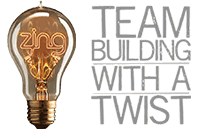How to Develop a Content Marketing Strategy
You could have written the best web content in the world, but if no one is going to see it, it’s of no use to your business. Here, we’ll help you develop a strategy that will allow you to showcase your content to the right online communities.
How to identify your content needs
Firstly, you need to identify what your customers want to see. Determine who your customers are and list their defining factors, such as their age, gender and geographical locations. From there, you can work out what type of content is going to appeal to them the most.
Bear your business offering in mind at all times, and think about how you can market your products or services as helpful and valuable. If you can link your readership’s needs to the services you provide, you’re well on your way to creating killer content that will push them further along the buying cycle and convert them into a paying customer.
Take a look at our whitepaper titled how to create engaging website content for tips on how to draft up incredible copy that not only informs, but sells.
Where will your content go?
Before you even make a start on producing a bank of amazing content, you’ll need to map out your content marketing strategy.
Where do you want to publish your content, and why? What return will you get from the piece?
Is your subject matter better suited to a blog or an online magazine? Or would you benefit more from creating a timely infographic, or even a YouTube video, and generating traffic from media that’s much more visual?
The type of content you decide to put out on the web will ultimately determine the type of audience you wish to attract.
How to develop an editorial calendar
An editorial calendar can help you spot opportunities for great content throughout the year. Planning ideas and topics in advance will not only ensure your writing team is more organised – it’ll also make sure you’re never short of inspiration.
Start by marking specific holidays or days of interest that could form the basis of your content. Include the obvious religious holidays and cultural occasions, such as Christmas, New Year’s Eve, Easter and Valentine’s Day, but also carry out some research into relevant public interest days: for example, World Mental Health Awareness Day takes place on 9th October, and National Doodle Day falls on 2nd February.
Don’t limit yourself to widely-celebrated landmark days. Try to branch out and find more obscure dates that are relevant to your industry and that will interest your readers.
You’ll also want to add in days that are important for your business or for your industry as a whole. For example, are there annual conferences that deserve to be mentioned on your website? Does your team take part in a charity event every year? Are you due to start marketing a particular product or service in the coming year? The key to developing an editorial calendar is to cover all bases from the very beginning so that you’ve got everything covered for at least 12 months (or perhaps longer if you can tie the calendar in with your overall marketing plan).
How to market your content
Subscriber feeds
Subscriber feeds, or RSS (Really Simple Syndication) feeds, allow visitors to your blog to subscribe to your new content. These kinds of feeds do not ask for an email or any account details, so are more attractive to readers, and can be very helpful in terms of helping you identify how many people are interested in the content you have to offer.
Services like Feed burner can help you to track RSS feed analytics for subscribers and activity. Once you have a better understanding of your reach and subscriber totals, you can tailor your posts to better accommodate your audience.
Eshots
An e-shot is a generic term for an email sent out to multiple addresses with the intention of selling a product or service. They’re also called mailshots or e-newsletters. These eye-catching sales pitches are usually distinguished from spam mail in that they are not unsolicited mail. This is due, on the large part, to companies using their own client mailing lists, and not buying mass lists.
There are two types of eshot. The first includes embedded or attached images. These types of eshots are designed to draw you in visually, but occasionally they can be formatted incorrectly, leading to layout issues that could affect usability and, ultimately, conversions.
The format of your eshot may look great on your computer, but beware that formatting could change if you are sending mail between Macs and PCs. If you have attached a file to the eshot, bear in mind that many mail systems will automatically filter the message into the recipient’s junk or spam folder.
The second type of eshot is HTML-based. HTML provides the basic structure of a webpage, so an HTML eshot prototype can be customised within the limits of HTML coding. Once you have a template to hand, all you need to do is populate it with new content.
There are copious benefits to sending out eshots, the main one being that you can actively target people who have come into contact with your business at one time or another. Most businesses will collect names and email addresses and add them to their client mailing list; it’s vital that the marketing team organises this data into different categories and tailors the eshot accordingly. For example, most companies will create lists for Existing Customers, Potential Customers and Previous Customers, and change their email marketing message to suit the needs of each group – Existing Customers may be looking for product updates and company news, while Potential or Previous customers could be more interested in special offers and incentives that will get them back on your books.
It is possible to buy users’ email details from unscrupulous sources, but if you intend to send thousands of emails to unwanting receivers, you may end up in hot water (at worst, your internet service provider could block you from sending or receiving emails if you are seen to be sending an abnormally large number of emails from one source). You will see much more success by using data that has been voluntarily given to you.
Paid social advertising
As a result of mass competition in the social media scene, businesses are coming up with more ways to vie for attention. One of the ways in which companies can maximise their use of social media platforms is by investing in paid advertising.
Facebook has fully embraced the trend for user ad targeting. Companies a post and it will appear higher and more frequently in users’ news feeds. It’s really just as simple as clicking a button to promote your content, and you can even select your audience. You could target people who have liked your page and their friends if you really want to. All you need to do is set your daily budget, adjust your targeting criteria, click ‘promote’ and see your views sky rocket!
Twitter adopts a slightly different stance when it comes to paid advertising. Its self-service ‘Promoted Tweets’ model allows you to target people by geographical location, interests or gender, but you only pay when people click on your tweet, retweet, reply to your tweet or mark it as a favourite.
Sponsored advertising
You can also market your content via sponsored advertising. In a nutshell, you can pay to be associated with an event, or even a person. These kinds of sponsorships are more prevalent than ever, particularly amongst celebrities who have made their name online – YouTube, Instagram and Twitter have become a feeding ground for sponsorships, and they’re not particularly subtle!
Despite criticisms of the model, associating a product with a brand is a fundamentally great idea. It creates a parallel between the endorser and the endorsement. For example, Roger Federer regularly endorses Nike, and this collaboration makes associations that individuals will consider when they make a purchase. If you like tennis and are a supporter of Federer, will you go and buy Nike products solely due to the endorsement? Probably not, but the association will stick in your mind and link the two.
Here is an example of a tweet that has been sponsored in this way. The hashtag #sp makes it clear that the user is viewing sponsored content.

Where to publish your content
You can publish content to a variety of different channels online. From your company’s own blog to platforms like Reddit and LinkedIn, there’s sure to be a site out there that attracts the right kind of audience for your output. But there are a number of useful sites that you may not have considered.
Today’s new wave of content publishers has been flocking to use the very popular media sharing service YouTube. Founded in 2005, the site now boasts over one billion views monthly and offers a great way to share information that links back to your business. You can easily create your own account and instantly start sharing videos. There is also the opportunity to generate revenue as a result of adverts on your videos (but bear in mind you’ll only make large sums of money if your content generates plenty of views).
Another popular domain is Tumblr. Previously thought to be dominated by teenage girls pining over celebrities and writing fanfiction, Tumblr has since matured and is now a perfect platform for businesses to share content in a more visual format. Registered users can post photos, infographics and more.
How to publish your content
So you’ve chosen a great home for your content, but when should it be set live?
The day and time of publication is very important. If you publish a blog at 3am on a Tuesday, it is very unlikely that you’ll get a lot of views, which will lessen your chances of receiving referrals from the content. The web moves fast, and people are posting new links around the clock, so reaching the right people at the right time is key to your success.
The peak time for content publication online is between 2 and 3pm on a weekday, and businesses have reported more success on a Thursday or Friday. Evidence has shown that when people don’t want to be in work, they spend more time online, so take advantage of popular procrastination times!
SEO tools such as Fanpage Karma and Google Analytics can help to determine the peak time for the kind of content you are producing, so you’ll get the most return from your promotional efforts.
Once you’ve figured out what, where and when you want to publish, you need to assign someone in your team with the responsibility of publishing content. It can be a time-consuming business, but platforms like Hootsuite offer a great way to schedule your posts, as you can link different social media accounts to your dashboard and send the same link out to multiple sites at the same time.
The software also allows you to schedule your posts for a particular time or day, and you can even use its analytics tool to report on the impact of your activity.
To summarise…
Your content marketing strategy will be completely unique to your business, but we hope that the steps and advice listed here will help you develop a plan of action that’s effective, efficient and makes the best use of your resources. However, if you need help putting together a content plan, the web copywriting team at Freelance SEO Essex will be happy to assist – simply contact us now to discuss your needs.
HTML cheatsheet collects the most common tools for web editors on a single page. Use it every time you are composing HTML markup code.






















